Would you let your child disappear into a playground consisting of junk – tools, boards, bricks, barrels, tubs, etc.? Let her start and tend to a fire? Be OK with him grabbing a saw and hammer and nails to build whatever springs into his imagination? (Oh, and lest we forget, you, dear parent, are forbidden from participating.)
Most of America’s ultra-cautious (and controlling) helicopter parents very likely would answer ‘no.’ Too many risks. Yet their answer should be a resounding yes.
Welcome to the debate over the American playground – its history, its current status, and whether it has any place in our nation’s collective future.
Parental Stress Over Stressed Kids
A favorite American pastime is worrying about kids. To some degree, that worry is warranted. Anxiety/depression, weight, diabetes, digital addiction, suicide – the list of afflictions besetting today’s kids is indeed troublesome.
Parents’ response to these issues is, at least on the surface, understandable: to broaden the safety net a bit more, to add more bubble wrap to the childhood experience, to control, prod, manage and manipulate.
Unfortunately, it’s becoming increasingly clear that these parental antidotes are precisely what most ails today’s kids. In trying to cut away all of life’s edges, soften its blows, and eliminate its risks, parents have unknowingly robbed kids of the critical opportunities they need to go it alone, tap into their imaginations, learn to socialize with each other, and suffer the slings and arrows that ultimately transform those young ones into mature adults.
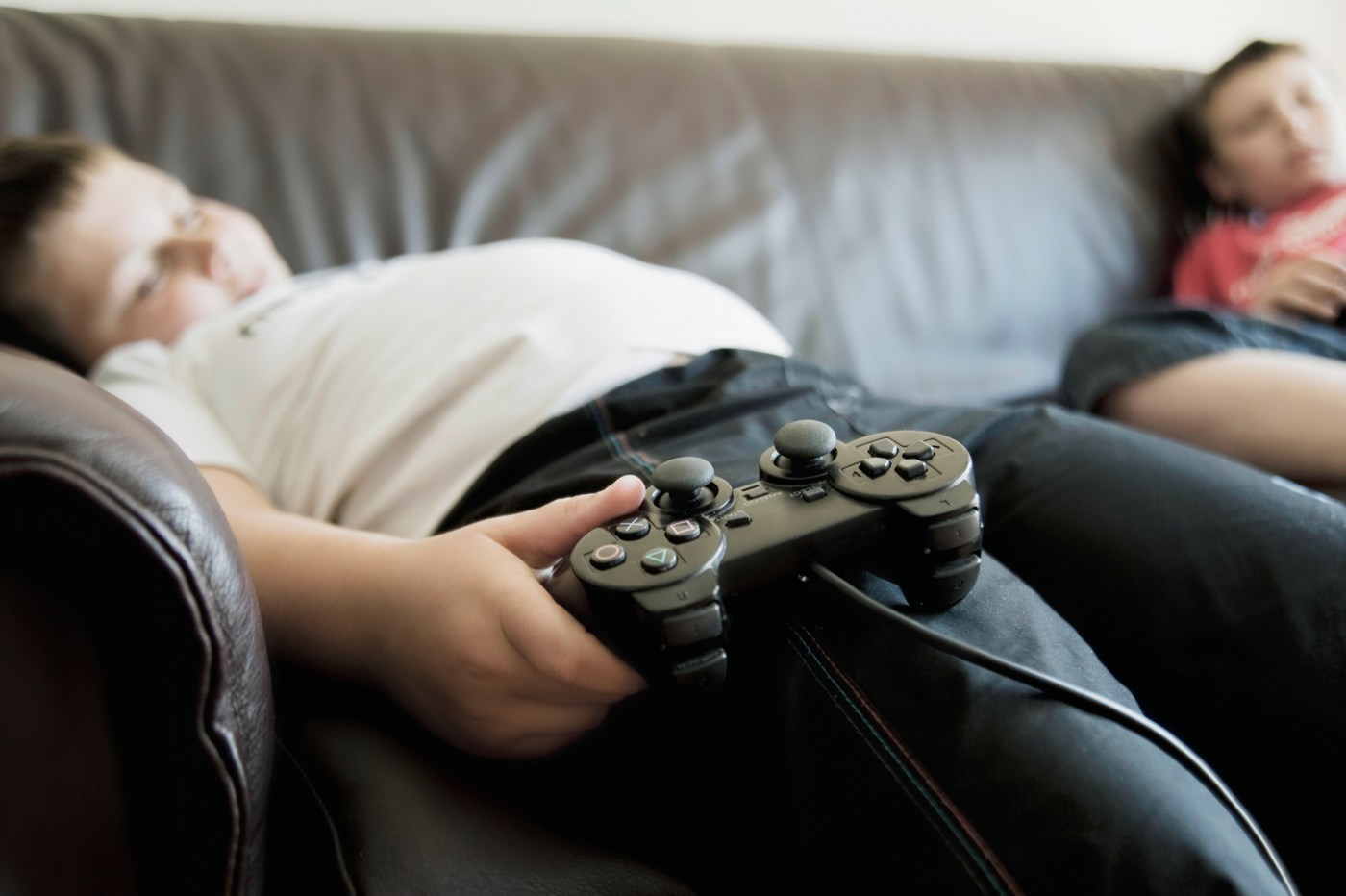
And nowhere is the evidence of this misguided adult interference on more prominent display than in the nation’s playgrounds.
The Decline of the American Playground
To understand many of the physical, psychological, and emotional changes of the American child over the past 20+ years, one need look no farther than the simultaneous changes in the playgrounds intended to engage, inspire, and exercise them.
Why the connection? Because play has been called the work of childhood – an activity central to the development of children’s minds, social skills, imagination, and problem-solving abilities.
So potent is play that many countries encourage play over formal education until kids are at least seven or even older. Research demonstrates, conclusively, that playful kids are more confident, capable, adventurous, willing to take risks, socially resilient, and healthy.
For decades, the American playground was a vibrant, lively hub of imaginative and physical activity featuring an array of apparatuses capable of entertaining – and occasionally injuring – kids of all ages. (And, yes, in a tiny number of instances, kids were seriously injured or even killed. More on this in a minute.)
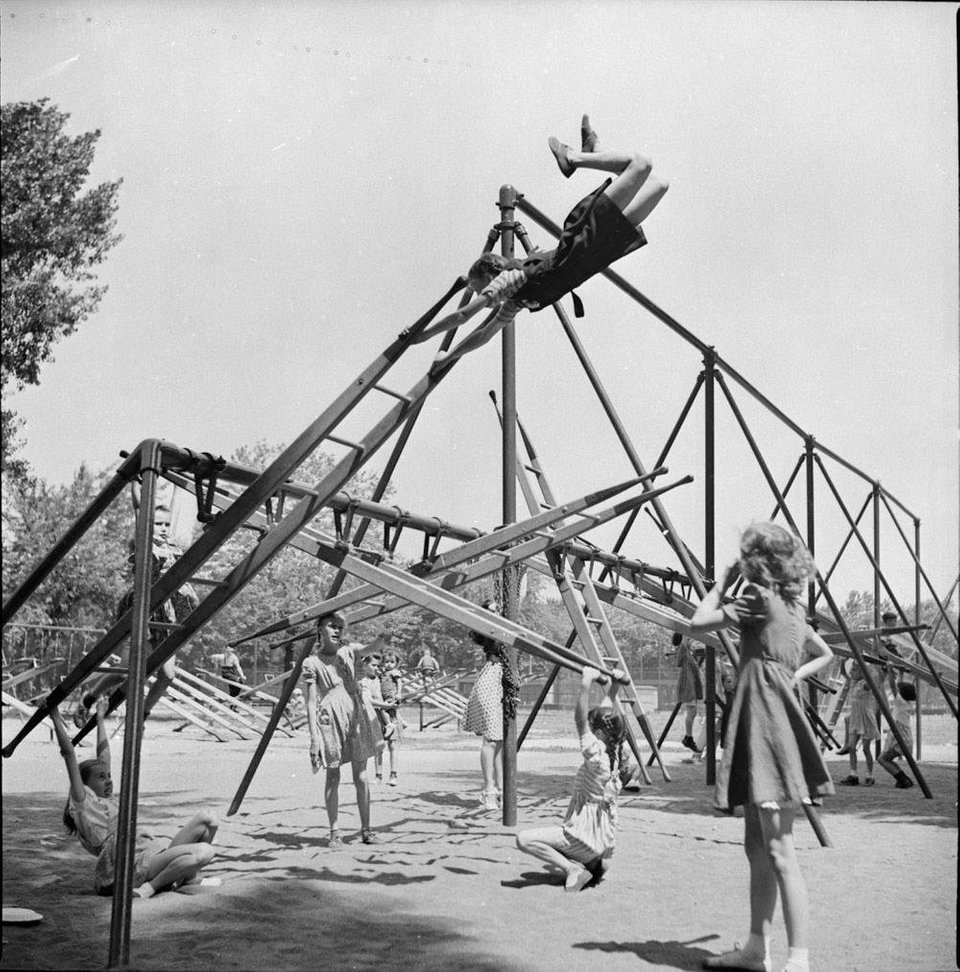
The apparatuses that made up these playgrounds (which often were built atop asphalt, grass, or hard-pack dirt), often included steel jungle gyms, see-saws, swings, teeter-totters, merry-go-rounds, slides, horizontal ladders, geodesic domes, metal rings, and tether balls.
Most important, these playgrounds were busy with kids – lots and lots of kids. In fact, playgrounds served as as kind of childhood hub through which kids of all ages, sizes, and backgrounds flitted about doing what kids do best: testing themselves and each other, inventing games, experimenting, and getting plenty of fresh air and exercise in the process.
But that was then and this is now.
The Modern Playground-Turned-Dead Zone
Today, by contrast, the typical American playground is a sterile, desolate outpost composed of primary-colored plastic forts, slides, bucket swings, tic-tac-toe boards, and steering wheels situated, at most, a few feet above a soft bed of wood chips or rubber matting.
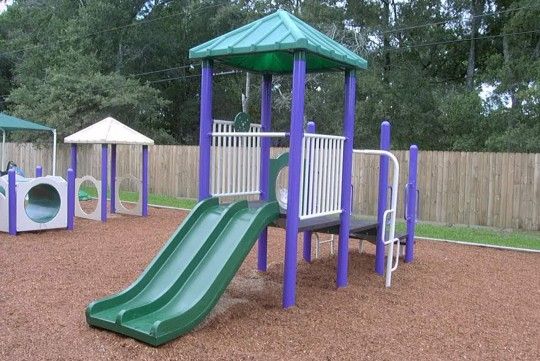
The only children found at these playgrounds are usually infants dragged there by well-intentioned parents. It rarely takes much time for child and parent alike to grow bored and move on to something more stimulating.
(In truth, teens also are known to congregate at these playgrounds, usually for an elicit conversation or smoke, confident in the knowledge their parents would never dream of looking for them there.)
This decline of the childhood meeting place coupled with a rapid escalation in the number of adult-organized youth activities has resulted in kids enjoying less and less unstructured play time. The result, not surprisingly, is that kids are being lured moth-like to flickering digital screens and their promise of social engagement and games beyond the prying eyes and controlling minds of their parents.
All of which begs the question why, in an era defined by epidemics in childhood obesity, diabetes, digital addiction, and dependence on mind-altering pharmaceuticals, has the sterilization of the American playground been allowed to unfold? For the answer, we need to travel back to a late-summer accident that occurred at a Chicago playground in 1978.
Beginning of the End
Despite warnings limiting the 12-foot ‘tornado slide’ to kids 12 or older, two-year-old Frank Nelson – escorted by his mother – ascended the stairs of the now-infamous spiral slide and fell through an opening at its top. The resulting fall to the asphalt fractured the boy’s skull and left him permanently brain damaged.
Nelson’s distraught parents sued the city of Chicago, the slide manufacturer, and the company that installed the slide. The resulting $9.5 million award (which could reach nearly $30 million should Nelson live to 75) – coupled with other pending lawsuits across the country – sent shockwaves through the nation’s playground authorities.
Not long after, the transformation of the American playground had begun. Out went the equipment of old and along with the hard surfaces upon which playgrounds were built. In their place came the short-statured plastic apparatuses with soft landing pads. And away went the kids.
Birth of the Junkyard Playground
If a solution is to be found for today’s playground morass, it had its beginnings in war-torn Denmark. It was there, during the Nazi occupation, that architect Carl Theodor Sorensen observed something peculiar: children ignored the city’s playgrounds – yes, even with all of that aforementioned dangerous equipment – in favor of bombed-out buildings, construction sites, and junkyards.
What Sørensen realized was that children, freed from parental oversight (war has a way of preoccupying the adult world), thrived at the task of creating playgrounds of their own designs, desires, and imaginations. Kids didn’t want adult-conceived playgrounds, they wanted to build their own – then tear them down and build another, and then another, and so on.
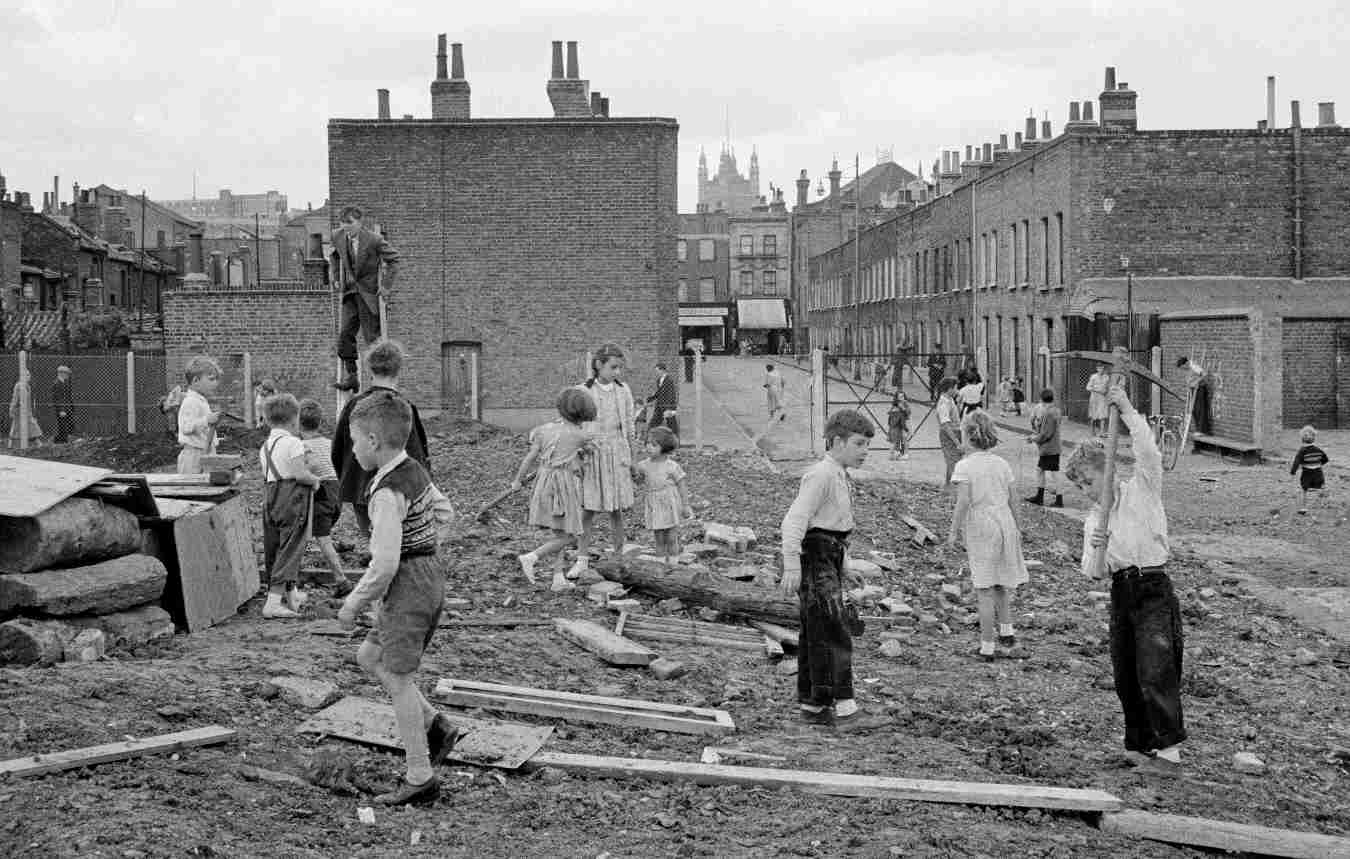
To further test this hypothesis, Sørensen took a vacant lot and populated it with junk: bricks, planks, bottles, buckets, automobile tires, empty drums, dirt. As expected, he watched the kids put virtually all of it to use building castles and forts, creating games, erecting fantasy worlds populated by characters from their own imaginations, and otherwise having lots and lots of fun.
Sørensen christened his invention a ‘junk playground,’ a concept subsequently copied by legendary British landscape architect and child welfare expert, Marjory Allen, who set up similar playgrounds all over London relabeled them Adventure Playgrounds.
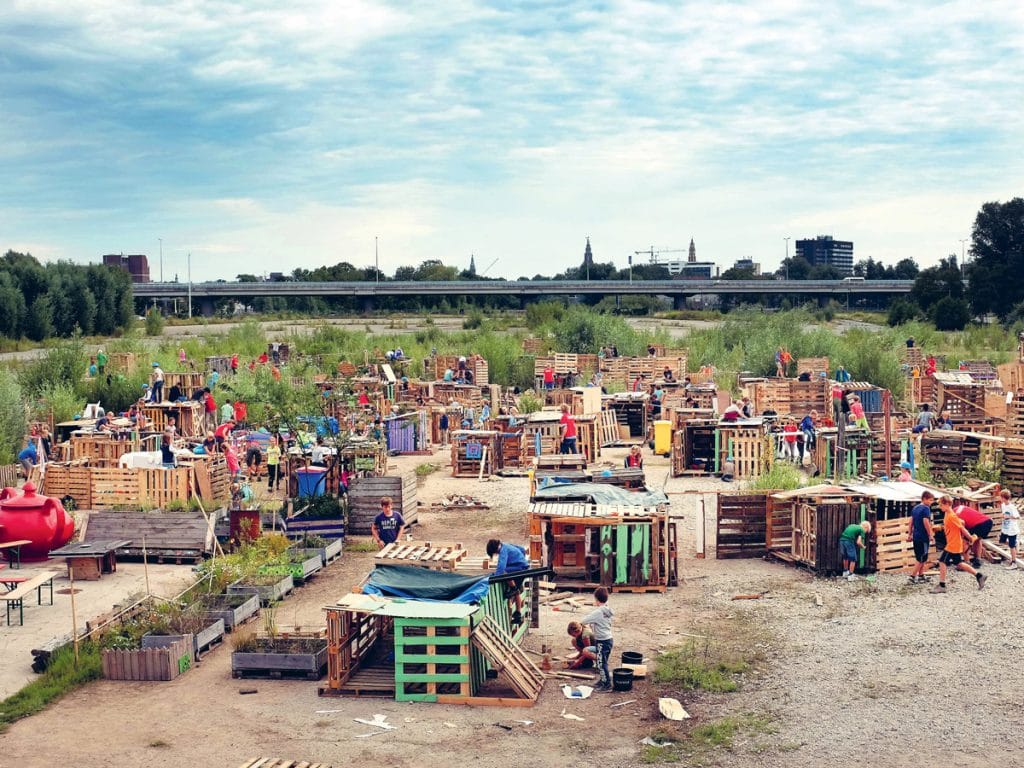
The Adventure Begins
As with Sørensen before her, Allen watched in amazement as kids showed up to her playgrounds in massive numbers. And then they played and played and played.
Today, none of these developments come as any surprise to child development experts, who recognize that junkyard / adventure playgrounds capitalize on three critical traits kids look for in play:
- Separation from Adults. This might be most important, because kids need the ability to discover things on their own, make mistakes, even hurt themselves (within reason) without parents constantly controlling, scheduling, managing and otherwise attempting to make things better. While today’s adventure playgrounds do include adult supervision, parents are forbidden from participation.
- Elements of Risk (vs. Hazard). Kids thrive when faced with a degree of risk, including height, tools, speed, roughhousing, and the ability to disappear (become lost). Adventure playgrounds are build with opportunities for risk (vs. hazards).
- Loose Objects. Kids’ imaginations awaken when they’re permitted to use odd items to build forts and castles, make-believe homes and automobiles, and worlds of their own design.
And what about the risk of injuries – especially with all that junk laying around?
Most parents are surprised to discover that kids are more likely to injure themselves in those dull, uninspired, antiseptic playgrounds that dot the American landscape. Why?
Studies have shown that kids, when allowed to experiment and create their own play structure, will either create or at some point encounter risky situations. But intrinsically, these kids know to proceed with caution.
Conversely, a child who is placed in an overly safe, rigidly controlled environment, will seek to create thrills. Says Reilly Wilson, chair of the nonprofit play:groundNYC, when kids realize all of the risk has been removed from an environment, “they do things which are actually more dangerous than the environments weren’t designed to accommodate.”
One other note: research also has shown that kids who play in junkyard playgrounds have proved to be more resilient, confident, and healthy (because they actually stay outside and play far longer).
So yes, America, maybe it’s time to junk the modern playground.
